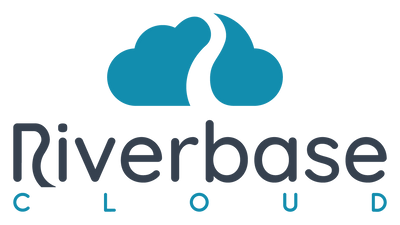The Evolution of Intelligent Advertising
AI in digital advertising refers to using artificial intelligence technologies to automate, optimize, and improve digital ad campaigns across platforms. Here's what you need to know:
| AI Application in Advertising | What It Does |
|---|---|
| Personalization | Tailors ad content to individual preferences and behaviors |
| Predictive Analytics | Forecasts consumer trends and ad performance |
| Programmatic Buying | Automates ad purchasing in real-time auctions |
| Creative Optimization | Tests and refines ad creatives automatically |
| Audience Segmentation | Creates precise audience groups for targeting |
The global AI in advertising market is exploding, projected to exceed $184 billion in 2025 and reach $826 billion by 2030. This isn't just another marketing buzzword—it's changing how businesses connect with customers.
When JPMorgan Chase used AI-generated ad copy, they saw a staggering 450% increase in click-through rates. Nutella sold 7 million uniquely AI-generated jar labels. Farfetch boosted email open rates by 7% and click rates by 25% using AI-driven content.
What's driving this revolution?
AI has moved from backend optimization to becoming the creative engine of digital advertising. It's analyzing billions of data points in milliseconds to determine not just who sees your ads, but what they should say and show to drive action.
For small and medium businesses, this technology is no longer reserved for enterprise giants with massive budgets. Today's AI advertising tools are accessible, scalable, and delivering measurable ROI improvements across industries.
I'm Gary Gilkison, founder of Riverbase Cloud, where I've helped hundreds of businesses implement AI in digital advertising strategies that balance automation with human expertise to achieve breakthrough results without breaking the bank.
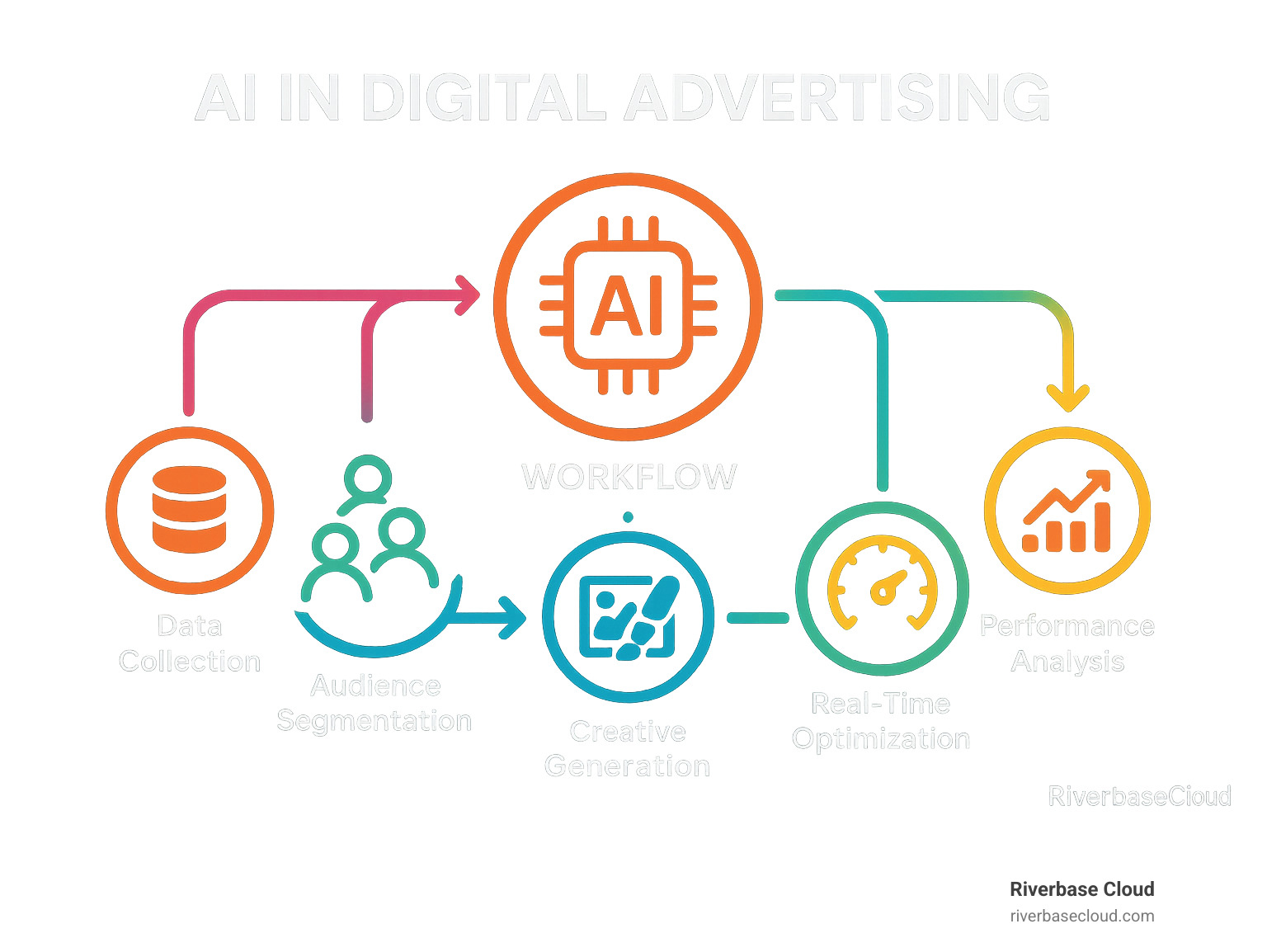
Quick ai in digital advertising definitions:
- Benefits of AI in marketing
- Google Ads AI tools
- Managed-AI ADS PPC
AI in Digital Advertising: From Mad Men to Machine Minds
The advertising industry has undergone a change that would leave Don Draper speechless. Remember those days of gut feelings, extended lunches, and manual media buying? Today's digital landscape looks nothing like that—it's now powered by smart algorithms, machine learning, and optimization that happens in real time.
AI in digital advertising isn't just a small step forward—it's a complete reinvention of how brands connect with the people they want to reach.
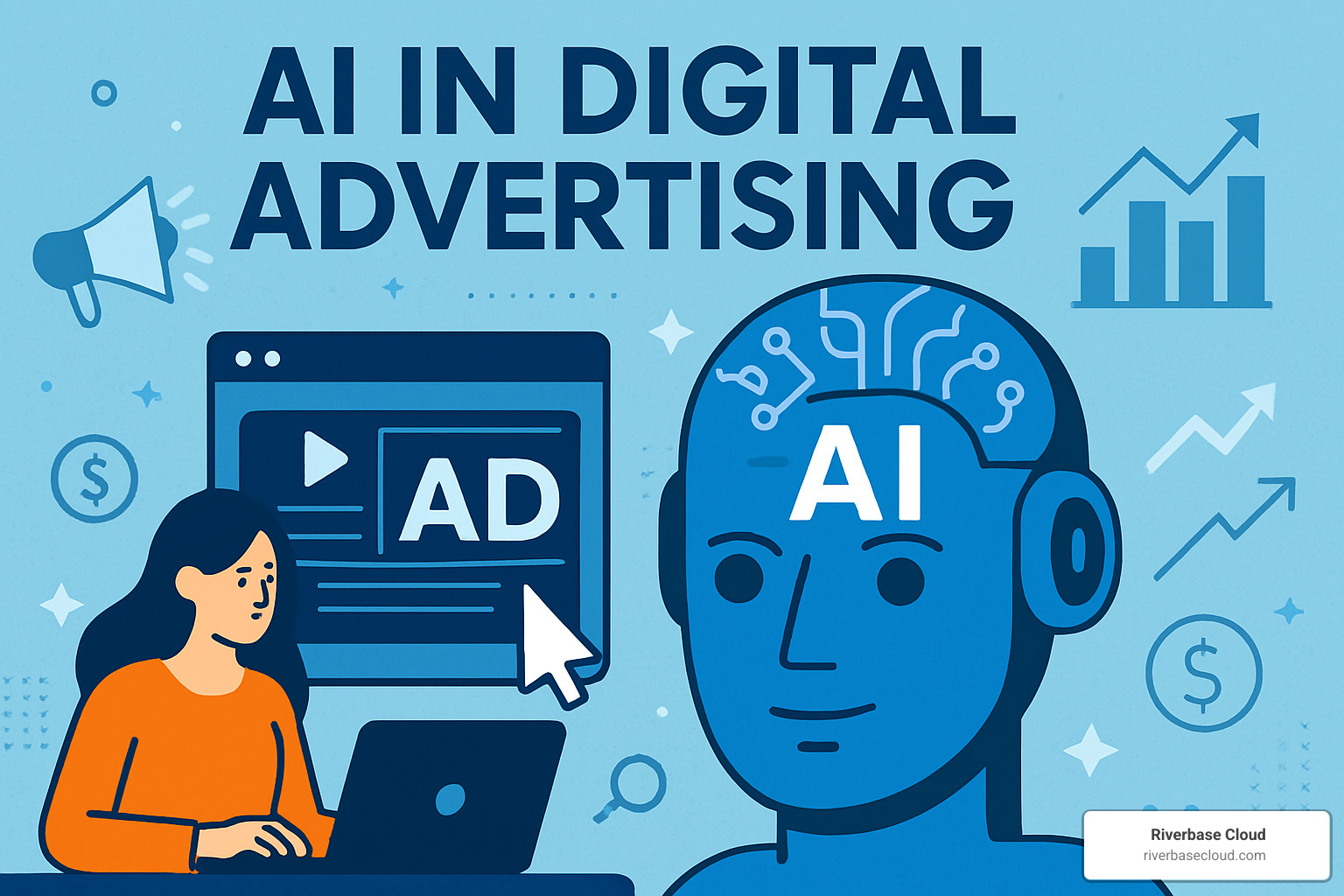
Traditional digital advertising relied heavily on humans making decisions at every turn. From choosing audiences and creating ads to allocating budgets and analyzing results, everything depended on people's limited ability to process data, test different approaches, and respond to market shifts.
| Legacy Targeting | AI-Powered Targeting |
|---|---|
| Broad demographic segments | Micro-segments based on behavior patterns |
| Manual bid adjustments | Automated real-time bid optimization |
| A/B testing with limited variables | Multivariate testing with thousands of combinations |
| Weekly or monthly optimization | Continuous real-time optimization |
| Uniform messaging | Dynamic personalized creative |
| Manual budget allocation | Algorithmic budget distribution |
As one marketing veteran at a Fortune 500 company told me recently, "The days of setting up a campaign and checking back in a week are long gone. Today's AI systems make thousands of tiny optimizations before I've even finished my morning coffee."
How AI Outperforms Classic Digital Tactics
The efficiency gains from AI in digital advertising are honestly mind-blowing. In the old days, marketers had to manually review performance data, make educated guesses about what might work better, implement those changes, and then wait (sometimes for weeks) to see if they were right.
With AI-powered campaigns, everything happens faster and smarter. AI systems learn continuously by analyzing performance data in real time, spotting patterns human analysts might miss entirely. Smart bidding adjusts your bids instantly based on conversion likelihood, time of day, device type, and countless other factors.
Creative elements get optimized automatically through Dynamic Creative Optimization, testing and refining headlines, images, and calls-to-action to maximize performance. And personalization scales beyond human capacity—instead of creating a few ad variations, AI can generate thousands of personalized ads custom to specific audience segments.
One of our clients, Shop Miscellany, saw their click-through rates jump 15% after implementing AI-generated content. Even more impressive? They cut their production time by 97.8%. This combination of better performance with dramatically improved efficiency is what makes AI in digital advertising so powerful.
Why Human Strategy Still Matters
Despite all these technological advances, human expertise remains essential. At Riverbase Cloud, we've consistently seen that the most successful AI in digital advertising campaigns balance automation with thoughtful human oversight.
AI is brilliant at optimization and execution, but humans still lead when it comes to strategic direction—defining business goals, establishing brand voice, and setting campaign objectives. We provide creative oversight to ensure AI-generated content truly reflects your brand standards and messaging. We consider ethical implications, watching for bias, privacy concerns, and brand safety issues. And we bring contextual understanding to interpret cultural nuances and sensitive topics that AI might completely miss.
A marketing director who implemented AI campaigns across multiple industries put it perfectly: "AI should improve a brand's existing voice rather than replace it." This reflects our philosophy at Riverbase Cloud, where we blend cutting-edge AI automation with expert human management.
The best approach isn't human versus machine—it's human plus machine. By leveraging the strengths of both, we create campaigns that are data-driven and creatively compelling, delivering results that neither could achieve alone.
The Tech Stack Behind the Revolution
Behind every successful AI in digital advertising campaign lies a sophisticated tech stack that's quietly revolutionizing how brands connect with customers. These aren't just fancy tools—they're the engines driving unprecedented performance gains for marketers who know how to harness them.
Generative AI & Dynamic Creative Optimization
Remember when creating ad variations meant days of design work and copywriting? Those days are fading fast. Today's generative AI tools like ChatGPT, DALL-E, and Midjourney can whip up compelling ad copy, eye-catching images, and even video content in minutes, not days.
Dynamic Creative Optimization (DCO) takes this creativity to another level. Platforms like Smartly.io, Celtra, and Creatify don't just create ads—they assemble and optimize them on the fly based on who's viewing them. It's like having thousands of tiny design studios working 24/7 to perfect your messaging.
"The ability to test creative variations at scale has completely transformed our approach to campaign optimization," shared one digital marketing manager I spoke with recently. "What once took weeks now happens automatically in hours."
I've seen this change with clients like a fashion retailer who, similar to Farfetch, boosted their email open rates by 7% for promotional emails and a whopping 31% for triggered emails. Their click rates jumped by 25% and 38% respectively—all through AI-optimized content that spoke directly to each customer's interests.
Predictive Targeting & Audience Segmentation
Gone are the days of broad targeting like "women ages 25-34." Today's AI in digital advertising can identify ultra-specific audience segments that would make traditional marketers' heads spin.
Modern AI doesn't just see demographics—it recognizes patterns in behavior that signal purchase intent. It can build lookalike audiences based on your best customers and segment audiences into micro-groups with laser precision.
Instead of broad brushstrokes, you can now reach "urban professionals who browse sustainable fashion on mobile devices during evening commutes and have purchased similar items in the last 30 days." That's not science fiction—it's Tuesday in AI marketing.
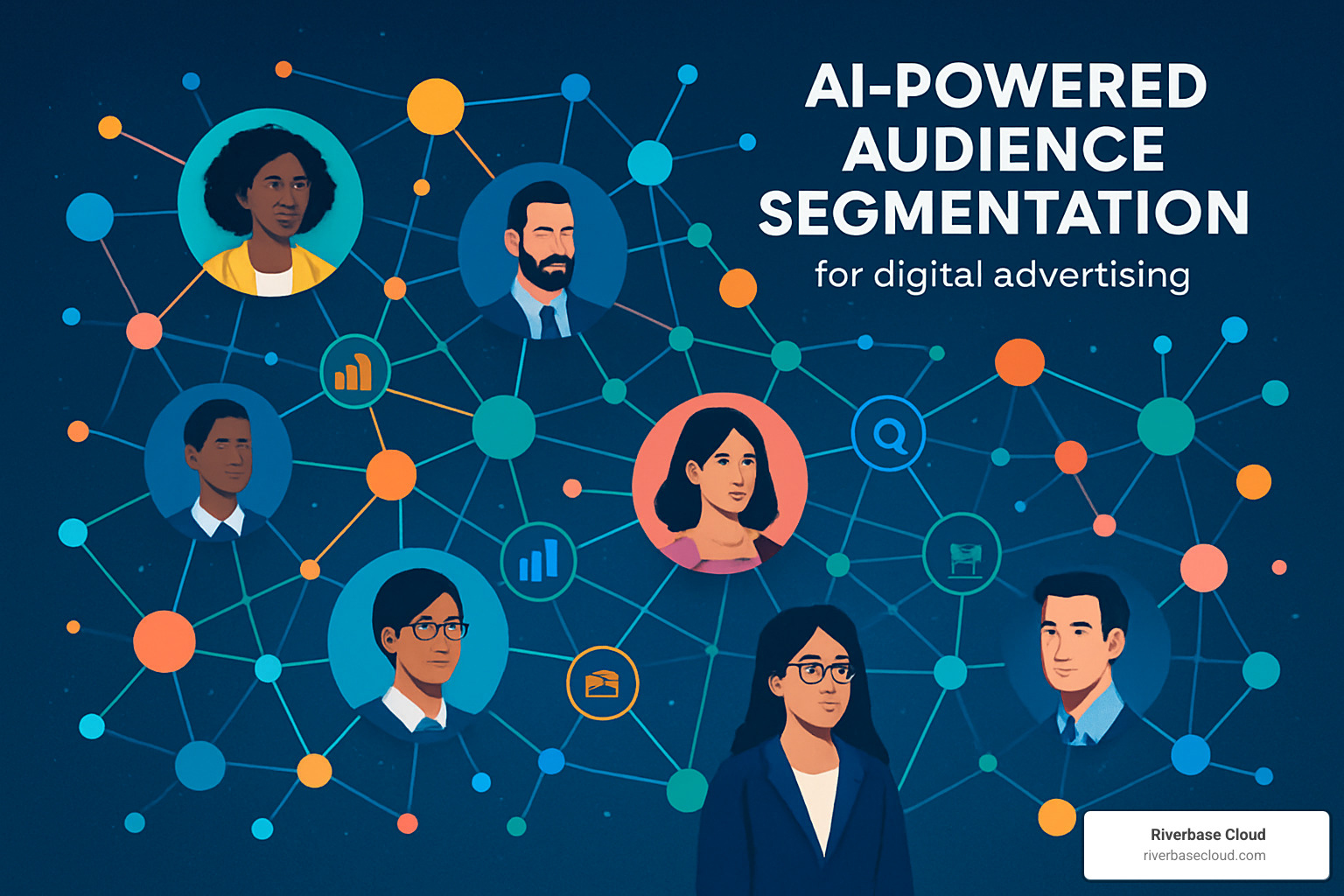
The Calm app is a perfect example of this personalization in action. By implementing Amazon Personalize to analyze user behavior, they delivered custom content recommendations that increased daily app usage by 3.4%. Small percentage, huge impact when multiplied across millions of users.
Scientific research on AI segmentation continues to show that these hyper-targeted approaches significantly outperform traditional methods.
Real-Time Budgeting & Bid Strategies
If there's one place where AI in digital advertising truly shines, it's in how it handles your ad dollars. Tools like Google's Performance Max, Meta's Advantage+, and Amazon's automated campaigns make thousands of micro-decisions every second to stretch your budget further than humanly possible.
One e-commerce director I worked with put it perfectly: "When we switched from manual bidding to Smart Bidding, we saw a 23% improvement in ROAS within the first month. The system could react to market changes faster than any human team."
These AI bidding systems are constantly evaluating:
- How likely each potential viewer is to convert
- Which channels are performing best right now (not yesterday)
- When your ideal customers are most receptive to ads
- How much each impression is truly worth
The result? Your budget automatically flows to the highest-performing opportunities in real-time, often before human analysts would even notice the trend.
At Riverbase Cloud, we've seen clients double their conversion rates simply by implementing the right AI bidding strategy for their business goals. It's not about replacing human judgment—it's about amplifying it with computational power that can process millions of data points in seconds.
Winning Campaigns: What Leading Brands Teach Us
Let's peek behind the curtain at some truly remarkable AI in digital advertising success stories. These aren't just impressive statistics – they're real-world examples of how brands are using AI to connect with customers in ways that were unimaginable just a few years ago.
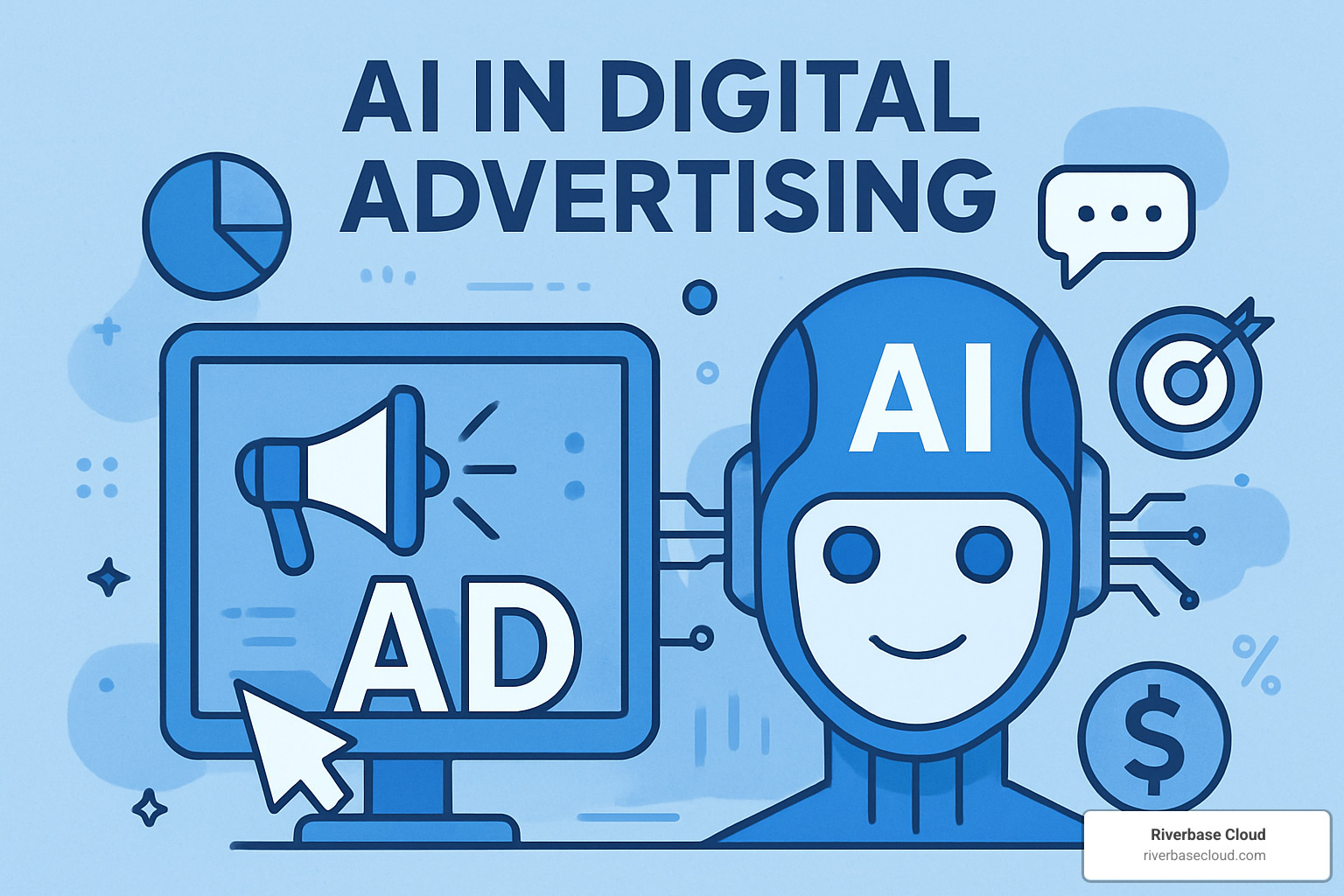
Case Study: JPMorgan's 450% CTR Surge
When JPMorgan Chase teamed up with Persado, they weren't just dipping their toes into AI – they were diving in headfirst. The banking giant wanted to see if machine-generated copy could outperform their human writers. The results? A jaw-dropping 450% increase in click-through rates.
What makes this story fascinating isn't just the numbers. It's that the AI finded emotional triggers and language patterns that human copywriters hadn't considered. As one JPMorgan marketing executive candidly admitted, "We would have never come up with language like that on our own."
Their approach was methodical but straightforward. They fed their brand voice guidelines and historical campaign data into Persado's system, which analyzed which emotional appeals resonated most with different customer segments. For each new campaign, the AI generated variations custom to specific audiences, with performance data continuously improving future outputs.
This wasn't about replacing humans – it was about uncovering new possibilities that even the most talented copywriters might never find on their own. The lesson? Sometimes AI doesn't just do what we do faster – it finds entirely new paths to success.
Case Study: Cadbury's Hyper-Local Personalization
Imagine being a small shop owner in India and suddenly having Bollywood superstar Shah Rukh Khan personally endorsing your business. That's exactly what Cadbury made possible with their innovative "Shah Rukh Khan-My-Ad" campaign.
Using AI lip-syncing technology, Cadbury created over 130,000 personalized video ads featuring Khan apparently promoting local stores by name. The campaign was pure magic – small businesses that could never dream of affording a celebrity spokesperson suddenly had one of India's biggest stars "speaking" directly about their shop.
"The campaign changed how we think about localization," as one regional marketing director put it. This wasn't just adapting a global message for a local audience – it was creating thousands of truly local, personalized campaigns at scale.
What's particularly heartwarming about this example is how AI in digital advertising democratized access to sophisticated marketing. The corner shop suddenly had the same caliber of spokesperson as multinational corporations. It leveled the playing field in a way that feels genuinely transformative.
Case Study: Nike's "Never Done Evolving" Spot
When Nike created their "Never Done Evolving" campaign featuring Serena Williams, they showed us that AI isn't just about optimization – it's about enabling new forms of storytelling that would otherwise be impossible.
The spot seamlessly blended current footage of Williams with archive material from throughout her career, using advanced computer vision and AI to create a fluid timeline of her evolution as an athlete. The technical achievement was impressive, but what really matters is how it served the emotional core of the story.
A creative director familiar with the project explained it perfectly: "The technology enabled the storytelling, not the other way around." Nike didn't use AI just because they could – they used it because it was the best way to tell this particular story about growth, persistence, and evolution.
What these three examples – from JPMorgan, Cadbury, and Nike – show us is that AI in digital advertising isn't just about efficiency metrics or cost savings. At its best, it's about enabling new creative possibilities and forging deeper connections with audiences in ways that simply weren't possible before.
At Riverbase Cloud, we're inspired by these examples of AI-powered innovation. We believe that small and medium businesses deserve access to the same powerful tools that these major brands are using – just scaled appropriately and with the human touch that ensures technology serves your unique business goals, not the other way around.
Guardrails: Ethics, Privacy & Responsible AI Use
As AI in digital advertising becomes more sophisticated and pervasive, we're facing important questions about how to use these powerful tools responsibly. It's a bit like being handed the keys to a sports car – thrilling, but requiring careful handling to ensure everyone stays safe.

Tackling Algorithmic Bias in AI in Digital Advertising
AI systems learn from the data we feed them – and unfortunately, that data often contains our own human biases. Without careful oversight, these biases can snowball into real problems, like ad targeting that unfairly excludes certain communities.
I recently spoke with a digital marketing director at a major retailer who shared a humbling experience: "We found that our initial audience models were underserving certain demographic groups. It wasn't intentional, but the bias in our historical data was being amplified by the algorithm."
At Riverbase Cloud, we take this challenge seriously. We've found that building diverse training datasets is essential – your AI is only as inclusive as the information it learns from. Regular bias audits using fairness metrics help catch problems early, while cross-functional review teams bring different perspectives to evaluate algorithmic decisions.
Think of it as teaching a child – you wouldn't want them learning only one perspective on the world. Similarly, your AI in digital advertising needs exposure to diverse viewpoints and experiences to make fair, balanced decisions.
Data Privacy & Transparency Obligations
Remember when targeted ads felt a little creepy? That consumer wariness hasn't disappeared – it's evolved into sophisticated privacy regulations like GDPR and CCPA that set new standards for how we collect and use data.
Building trust requires clear consent mechanisms that don't hide behind confusing legalese. Consumers deserve to know when AI is being used to personalize their experiences. As one compliance officer at a marketing technology company told me, "Consumers are increasingly privacy-conscious. The brands that will win in the long term are those that respect privacy while still delivering personalized experiences."
The good news? You don't need to sacrifice effectiveness for privacy. Data minimization (collecting only what you truly need), robust security measures, and smart anonymization techniques can help you thread this needle. At Riverbase Cloud, we've found that AI in digital advertising actually works better when it respects boundaries – just like human relationships.
Building a Responsible Adoption Roadmap
Jumping headfirst into AI advertising without a thoughtful plan is a recipe for trouble. Instead, consider a more measured approach that builds in ethical guardrails from day one.
Start with focused pilot projects where you can carefully monitor results and make adjustments. Create a cross-functional ethics board that brings together different perspectives – marketing knows what sells, legal understands compliance, IT grasps technical limitations, and customer advocates represent the people you're trying to reach.
Human review processes for AI-generated content aren't just about catching mistakes – they're about ensuring your brand voice stays authentic and your values remain intact. As one CMO who successfully implemented AI across their marketing organization shared, "We've found that a phased approach to AI adoption allows us to build in ethical guardrails from the beginning."
The beauty of this measured approach is that it doesn't slow innovation – it actually makes innovation more sustainable by building consumer trust rather than eroding it. AI in digital advertising works best when it improves human creativity rather than replacing human judgment.
This balanced approach is at the heart of how we work with clients at Riverbase Cloud. We believe powerful technology requires thoughtful implementation, especially when it comes to something as personal as advertising.
More info about AI marketing solutions
Measuring Impact & Looking Ahead
The true value of AI in digital advertising isn't just in the fancy technology—it's in the real business results it delivers. As someone who's seen the evolution of digital marketing firsthand, I can tell you that measuring these results has never been more exciting or more complex.

KPIs That Matter in AI in Digital Advertising
Gone are the days when we'd celebrate a good click-through rate and call it a day. Today's AI-powered campaigns require more sophisticated measurement approaches that tie directly to business outcomes.
Return on Ad Spend (ROAS) has evolved beyond simple conversion tracking. Modern AI systems can now predict the lifetime value of a customer, not just their first purchase. This means you're optimizing for long-term business growth, not just quick wins.
Cost Per Incremental Lift helps you understand what's actually working. Rather than taking credit for conversions that might have happened anyway (we've all been guilty of that!), AI can isolate the true impact of your advertising efforts.
I recently spoke with a data analytics director at a subscription company who put it perfectly: "We've moved beyond simple conversion tracking to measuring how advertising influences the entire customer journey. Our AI models can now predict which ad exposures are most likely to create high-value, long-term customers."
At Riverbase Cloud, we love helping clients develop measurement frameworks that capture the full impact of their AI in digital advertising initiatives. It's about making sure every optimization effort directly supports real business goals—not just vanity metrics that look good in presentations.
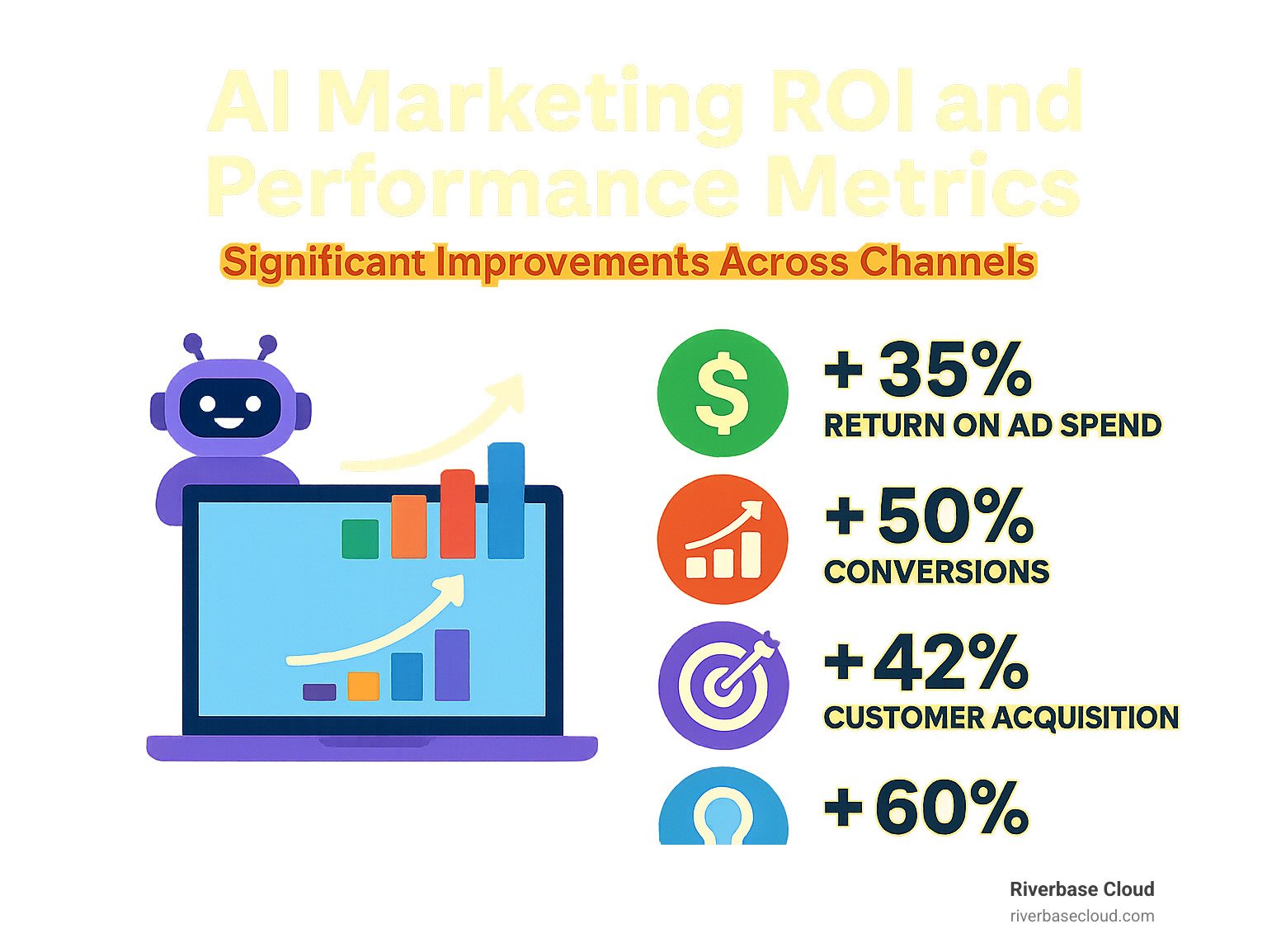
Future Trends Marketers Can't Ignore
The world of AI in digital advertising moves fast—blink and you might miss the next big thing. Several emerging trends are already reshaping how brands connect with consumers.
Search Generative Experience (SGE) is fundamentally changing how people interact with search engines. Google's AI-powered search results mean we're no longer just optimizing for blue links—we're optimizing for AI-generated answers. This shift will transform both SEO and PPC strategies in ways we're just beginning to understand.
AI-Generated Video is about to explode. Tools like Runway and Synthesia are making it possible to create personalized video content at scale. Imagine sending thousands of customers their own custom video message—without breaking the bank or spending months in production.
The death of third-party cookies has been greatly exaggerated, but Zero-Party Data Strategies are becoming increasingly important. This is information consumers willingly share with you—and AI helps turn these direct insights into powerful personalization opportunities.
An emerging technology strategist I recently interviewed put it well: "The brands that get ahead of these trends will have a significant competitive advantage. We're not just talking about incremental improvements—these changes will reshape the entire advertising ecosystem."
Action Plan for 2025
So how do you prepare for this rapidly evolving landscape? At Riverbase Cloud, we recommend a structured but flexible approach to AI in digital advertising:
Start with Skill Upskilling. Your team doesn't need to become AI engineers, but they should understand the capabilities and limitations of these technologies. This knowledge gap is often what prevents organizations from realizing the full potential of AI.
Don't forget to conduct a thorough Tool Stack Audit. Many companies are paying for tools with overlapping capabilities or missing crucial functionality. Figure out what you have, what's working, and where the gaps are.
Perhaps most importantly, implement a Phased Roll-Out approach. Start with high-impact, low-risk applications and expand based on results. Too many organizations try to transform everything overnight and end up frustrated with the results.
"The organizations that will thrive are those that view AI not as a one-time implementation but as a continuous journey of learning and adaptation," a digital change consultant recently told me. I couldn't agree more.
That's why at Riverbase Cloud, our Managed-AI approach combines cutting-edge automation with good old-fashioned human expertise. We believe AI in digital advertising works best when powerful technology is guided by experienced human hands.
Using AI: Your Guide to Google Ads Tools
Latest research on AI market growth
Frequently Asked Questions about AI in Digital Advertising
How does AI personalize ads without breaching privacy?
When I talk to clients about ai in digital advertising, privacy concerns almost always come up. It's a valid worry – how can AI deliver personalized experiences without crossing privacy lines?
The good news is that responsible AI advertising doesn't have to be invasive. Think of it like a smart salesperson who notices what section of a store you browse without needing your name or address.
Modern AI systems can personalize effectively while respecting boundaries through several thoughtful approaches. They often analyze patterns across groups rather than stalking individuals. Many advanced systems now keep personal data right on your device instead of uploading everything to the cloud.
"The future of personalization isn't about knowing everything about an individual—it's about understanding contexts and moments," as one privacy-focused AI researcher explained to me recently.
Some of the most innovative techniques include federated learning (where AI models train across many devices without centralizing your data) and differential privacy (which adds carefully calibrated "noise" to data to protect individuals while preserving overall patterns).
At Riverbase Cloud, privacy isn't an afterthought – it's built into our approach from day one. We help businesses deliver relevant experiences without compromising the trust their customers place in them.
What budget do small businesses need to start with AI tools?
I remember talking with a local bakery owner who assumed ai in digital advertising was only for companies with six-figure marketing budgets. She was shocked when I showed her what was possible for less than her monthly coffee expense!
The democratization of AI tools has been remarkable. You can now access powerful capabilities that would have cost thousands just a few years ago for surprisingly affordable monthly subscriptions:
Entry-level AI copywriting tools often start around $29-99 monthly, while basic AI image generation might run $15-50 monthly (or even pay-per-use options). Many automated bid management features come included right in the ad platforms you're already using.
"The barrier to entry for AI advertising has dropped dramatically," as one small business consultant I work with often points out. "Tools that would have cost thousands a few years ago are now available for less than $100 a month."
What I've found helps small businesses most isn't necessarily going all-in on every AI tool available, but starting with one specific area where they're struggling. Maybe it's automating ad bidding to stop wasting budget, or using AI to generate more consistent social content.
For businesses who want the benefits without the learning curve, our Managed-AI services at Riverbase Cloud combine powerful AI tools with expert management at price points specifically designed for small and medium businesses.
Will AI replace human creatives entirely?
This question comes up in almost every conversation about ai in digital advertising, and I understand why. The headlines about AI-generated content can make it seem like human writers and designers might soon be obsolete.
But after working with hundreds of campaigns, I've seen something very different happening. Rather than replacement, we're witnessing a beautiful collaboration emerging.
AI excels at certain tasks – generating variations, testing different options, optimizing based on performance data. But humans still dominate in strategic thinking, emotional intelligence, and cultural awareness. The magic happens when these strengths combine.
I recently spoke with an agency creative director who put it perfectly: "AI is becoming the world's best creative assistant, not the world's only creative. It can help us explore more possibilities and execute more efficiently, but the big ideas still come from human insight."
Think of it this way – AI helps creatives escape the tedium of producing endless variations and formatting adjustments, freeing them to focus on the strategic and emotional aspects of advertising that truly connect with audiences.
At Riverbase Cloud, our Managed-AI approach ensures technology serves human creativity, not the other way around. We've found the most successful campaigns leverage AI to amplify human ingenuity rather than replace it.
Conclusion
The journey of AI in digital advertising truly marks one of marketing's greatest changes. We've moved from gut feelings and manual processes to a world where intelligent algorithms can craft personalized messages, optimize budgets in real-time, and even generate creative content that resonates deeply with audiences.
The results speak for themselves. JPMorgan's remarkable 450% boost in click-through rates. Cadbury creating 130,000 personalized celebrity endorsements for local shops. These aren't just incremental improvements—they represent entirely new possibilities that simply couldn't exist without AI.
But here's what I've learned after helping hundreds of businesses implement these technologies: the magic happens at the intersection of human creativity and machine intelligence.
At Riverbase Cloud, we call this our Managed-AI approach. It's not about replacing the human touch—it's about amplifying it. We've seen how AI can handle the data-heavy lifting while our human experts focus on strategy, brand voice, and the emotional connections that truly drive customer decisions.
Think of AI as your marketing team's new superpower, not its replacement. The tools get smarter every day, but they still need human guidance to ensure they're serving your unique business goals and brand values.
Looking ahead, successful advertising won't just be about finding the right person at the right moment (though AI excels at that). It will be about creating messages that genuinely connect—messages infused with human insight but delivered with AI's precision and scale.
The future belongs to marketers who accept both.
Ready to see how this balanced approach could transform your digital advertising? Our AI-driven PPC solutions combine cutting-edge automation with expert human oversight to deliver results that are both measurable and meaningful.
Because at the end of the day, the most powerful advertising isn't just intelligent—it's also authentically human.
